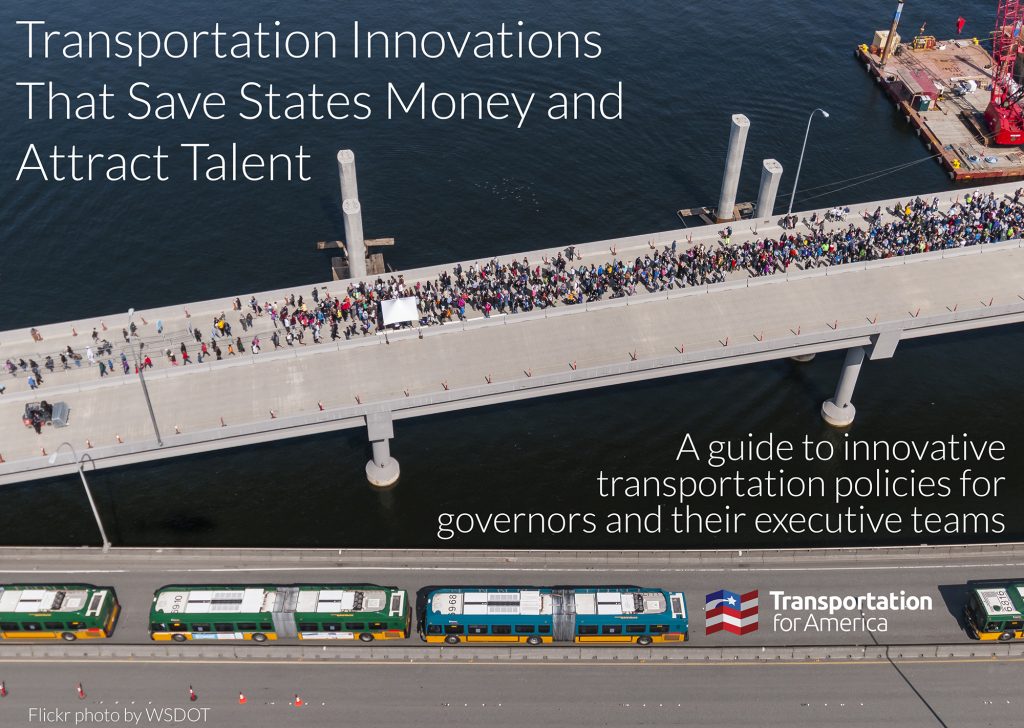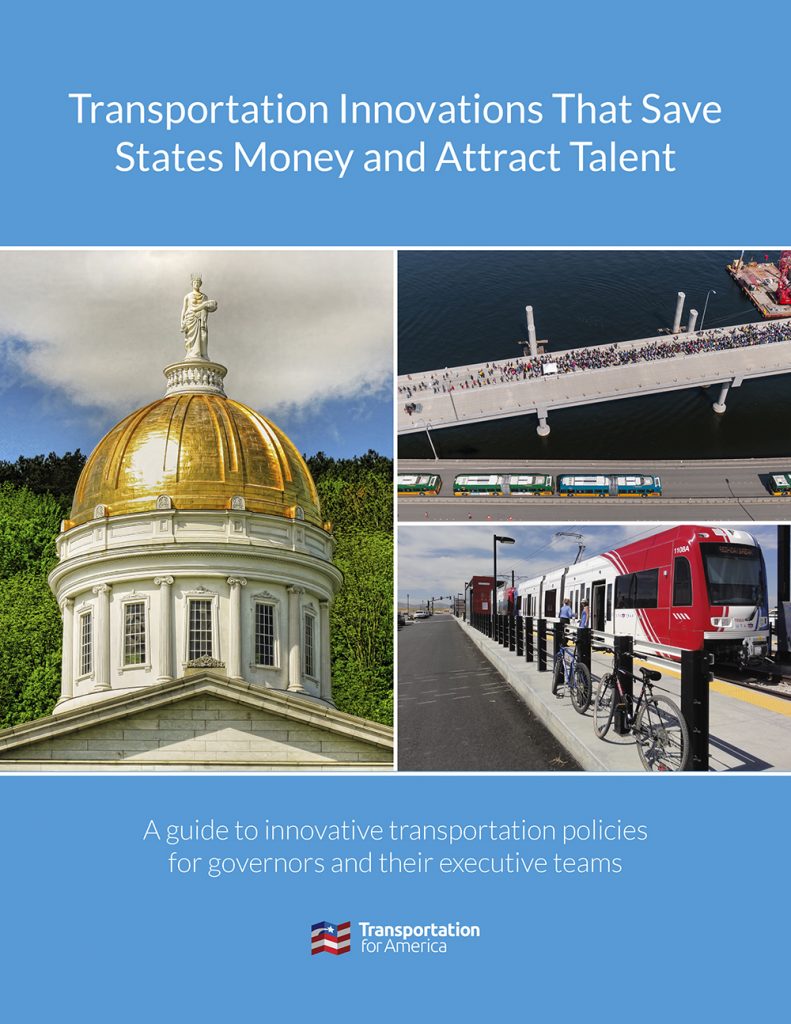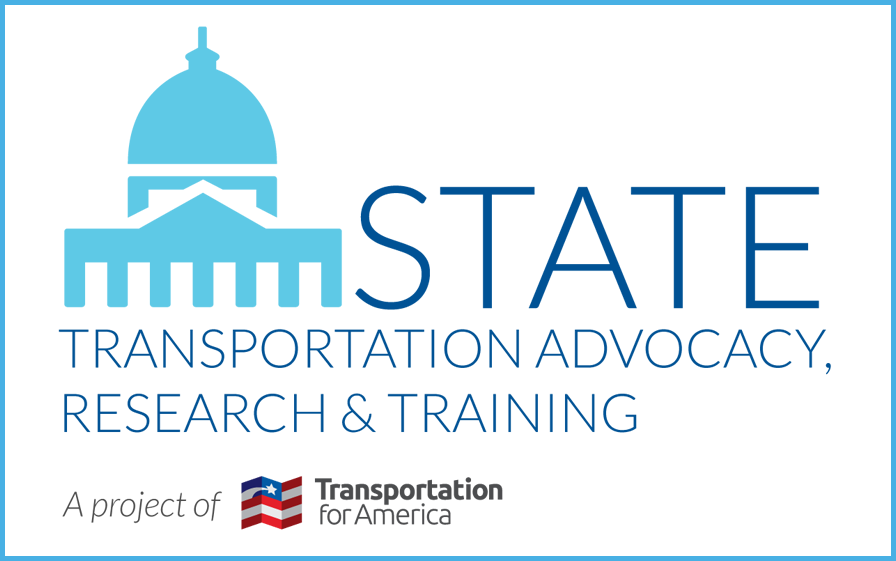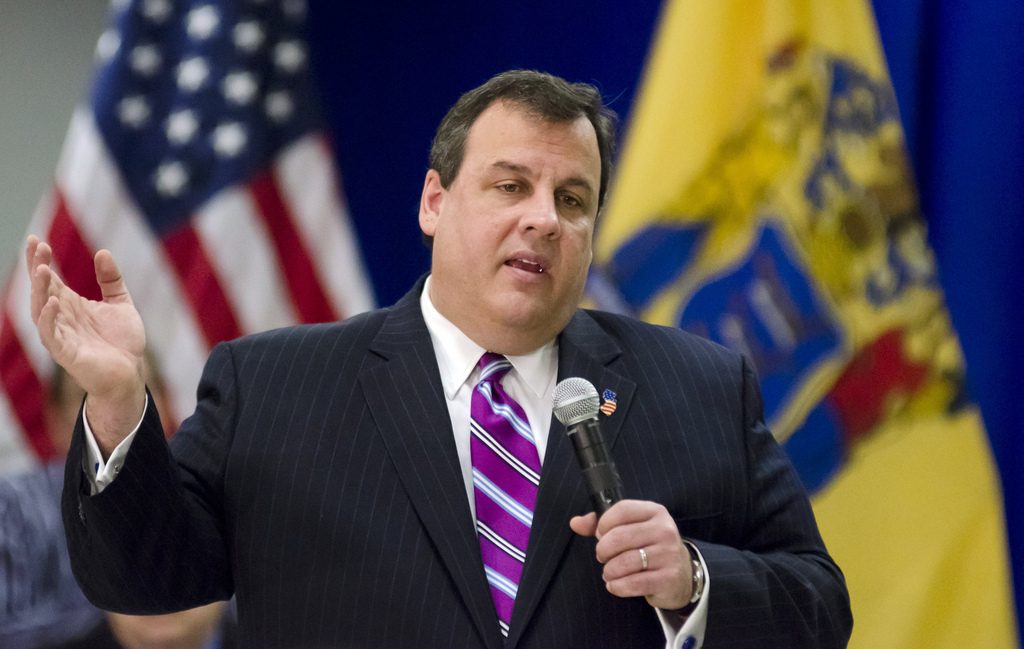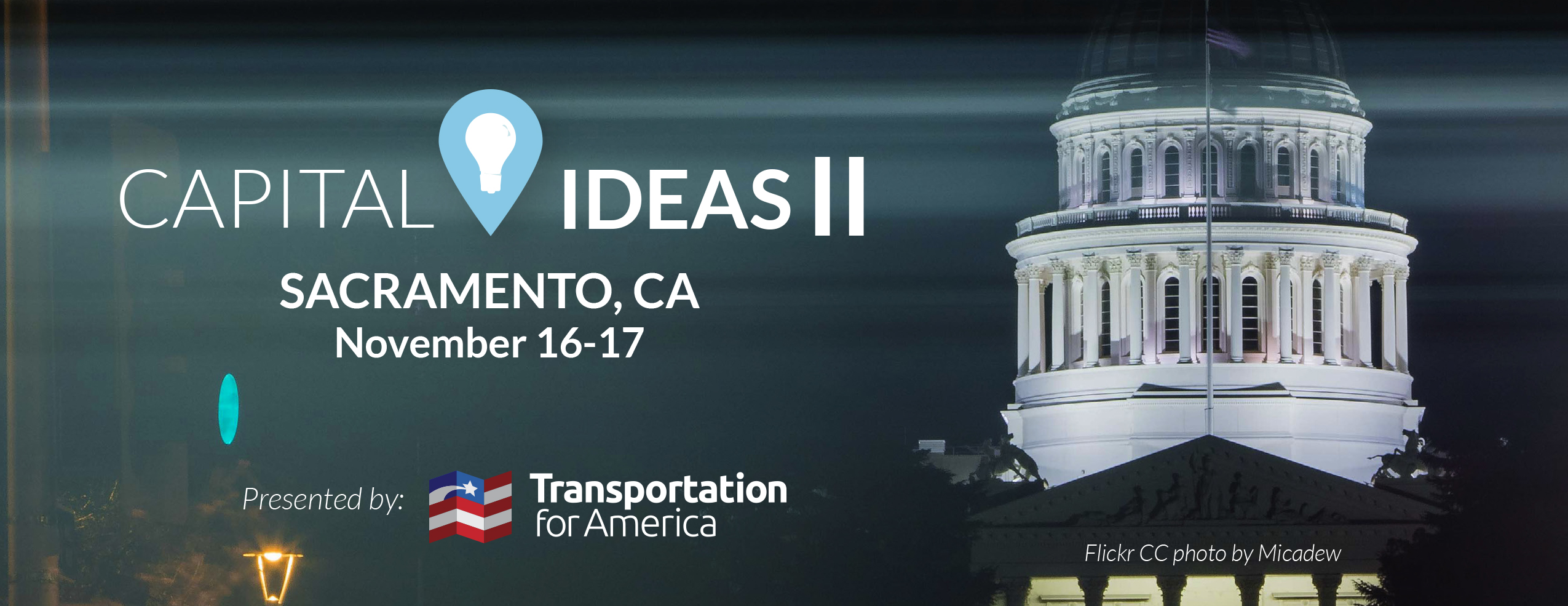
Massachusetts’ recent economic development success is attributable in part to the leadership of the past two gubernatorial administrations — one Democratic, one Republican — and their efforts to focus state investments on improving public transit, repairing critical infrastructure and doubling down on supporting and creating the walkable communities that are in high demand.
This short story is adapted from Transportation Innovations That Save States Money and Attract Talent, our new short policy guide for governors. It shows how a fresh approach transportation is fundamental to creating quality jobs and shared prosperity while running an efficient government that gets the greatest benefit from every taxpayer dollar. – Ed.

Flickr photo by Massachusetts Office of Travel. https://www.flickr.com/photos/masstravel/29675157103/
Massachusetts won a major endorsement for their strategy when, in 2016, General Electric announced it would relocate its corporate headquarters from suburban Fairfield, CT, to the Seaport neighborhood in Boston. GE reportedly turned down sizable tax-incentive offers from other states and chose, instead, to locate in a walkable and transit-served location where the company could draw educated younger workers. GE CEO Jeffrey Immelt said that in Boston, GE found “an ecosystem that shares our aspirations.”
GE was just one of dozens of companies that have located to town or city centers in Massachusetts in recent years, as chronicled by Smart Growth America’s Core Values research. Boston and adjacent cities like Cambridge and Somerville are booming and are magnets for educated, young workers.
Over the past two gubernatorial administrations the state has invested in these walkable communities that anchor a talented workforce and foster economic development.
Former Governor Deval Patrick’s (D) administration championed new funding for transportation projects and inked an agreement that combined funding from the state, the federal government, and a private real estate developer to finance a new subway stop at Assembly Square. The station opened in 2014 and anchors a major mixed-use development that has transformed a former industrial site. The Patrick administration also advanced plans for an extension of the Green Line light rail service to more Somerville neighborhoods.
Though Governor Charlie Baker (R) won while running against future automatic increases to the state gas tax, he clearly understands that improving transit and investing in these walkable places was critical to the state’s prosperity.

MassDOT Secretary Stephanie Pollack presenting at T4America’s Transportation Leadership Academy focused on performance measures.
To achieve this vision, he appointed Stephanie Pollack, a transportation expert and transit advocate, to run MassDOT, the state’s department of transportation. While some in the state were surprised by his pick of a notable transit advocate to run MassDOT, Governor Baker and Secretary Pollack have a shared interest in reforming the state’s transportation programs to ensure that transportation investments are connected to economic development goals. They’re intent on measuring the results that are important for voters and taxpayers and holding the agency accountable for meeting them.
“Transportation is not important for what it is, it’s important for what it does,” Pollack frequently says — as she did at the last gathering of our Transportation Leadership Academy.
The Baker administration considered abandoning the Green Line project when faced with escalating costs. But the benefits of the project were too significant for the state to walk away.
As Pollack has said, “The return on investment in transportation, whether it’s the Green Line extension or another [project], is not just measured in how many people physically use it. It’s also measured in improvements to the economy, decreases in people’s commuting time, creation of new jobs and reduction in greenhouse gases.”
Instead, the state’s largest transit agency, the MBTA, found ways to lower the expected costs by redesigning stations and is contracting new management for the project. While focusing intently on reforming MBTA, Baker sought workable plans in order to maintain the commitments that the commonwealth, under previous administrations, had made to communities.
In order to achieve clear outcomes with transportation dollars, MassDOT began to implement a new, performance-based process to help select projects in which to invest. Evaluating the expected outcomes from every possible project helped the agency put together a capital plan that balances repair of critical infrastructure and further improvements to transit.
In addition to funding transit, MassDOT has also targeted funding specifically at making local streets better for walking and biking through an incentive-based complete streets program. A small investment of state funds leverages local funds to plan and build projects to make streets better for people traveling by foot and by bicycle.
Massachusetts is enjoying economic returns from administrations that understood how tailored transportation investments could support walkable communities. The leadership and reform efforts under both Democratic and Republican administrations is paying off with a state that is attracting talented workers, drawing relocating businesses, and creating quality jobs.
Read our full guide for Governors, which covers how state transportation policy too often fails to accomplish these types of goals, and offers recommended, proven solutions with a track record of success in other states.




